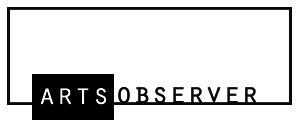WASHINGTON, DC—Artists are working out of two small shacks in front of the Corcoran Gallery of Art. The structures are a part of “Habitat for Artists,” an artist-run program founded in 2008 that seeks to engage new audiences, encourage dialogue with the community and explore sustainable practices in the creation of art.
Last week, Corcoran College of Art and Design student Lorenzo Cardim constructed a sculpture with plastic food containers. He collected the used containers from students and it took all week to accumulate enough for the project which he attached to the front of one of the habitats. Photographer Edwina Chen drilled holes in the side of one of the structures to mount her “light bulb” installation composed of recylcled plastic liter bottles. Multimedia artist Mark Strandquist set up a table in front of the 6 x 6 foot temporary artist studios where he explained his participatory postcard project to passersby. Strandquist’s “Write Home Soon” effort solicits contributions about a lost space—either “personal, physical, mental or metaphorical”—in the form of photos and memories submitted via postcard.
A new group of artists is working in the habitats this week, the final days of the installation at the Corcoran, the first museum to partner with the program. Temporary studios are also at THEARC, the museum’s community partner site at 19th Street SE and Mississippi Avenue. “Habitat for Artists” is on view at the Washington sites from July 16 to Aug. 24, 2012.
All photos © Arts Observer

Edwina Chen measuring to determine where to drill holes for her liter light bulbs.

Two temporary art studio structures will remain in front of the Corcoran Gallery of Art through Aug. 24.

Plastic liter bottles collected for Edwina Chen’s light bulb installation.

Corcoran student Lorenzo Cardim composed an installation of cascading plastic food containers with a base of black bottles. In background, Edwina Chen works on her light bulb installation.

Detail of plastic food container installation by Lorenzo Cardim which has a chicken wire foundation to help hold the shape.

The “Habitat for Artists” project is on site at the Corcoran and THEARC.

On the side of one of the habitats, black plastic discs and cable ties form an installation by Ira Tattelman intended to encourage discussion about the Maine Avenue Fish Market in Southwest and bring awareness to plastic pollution in the oceans.


